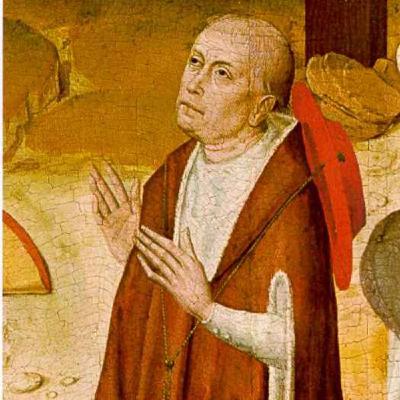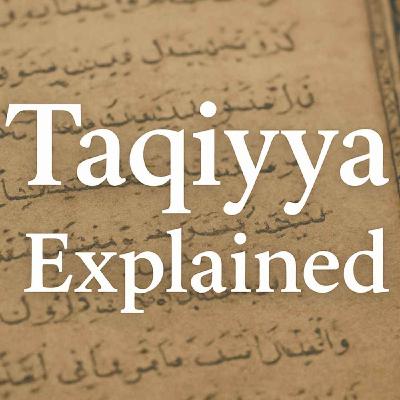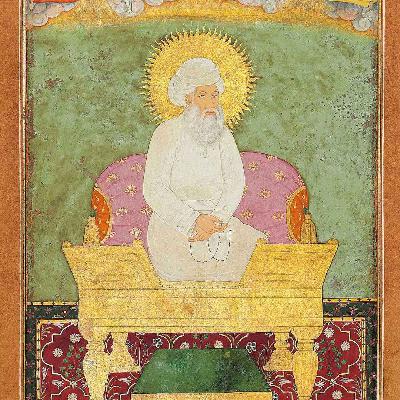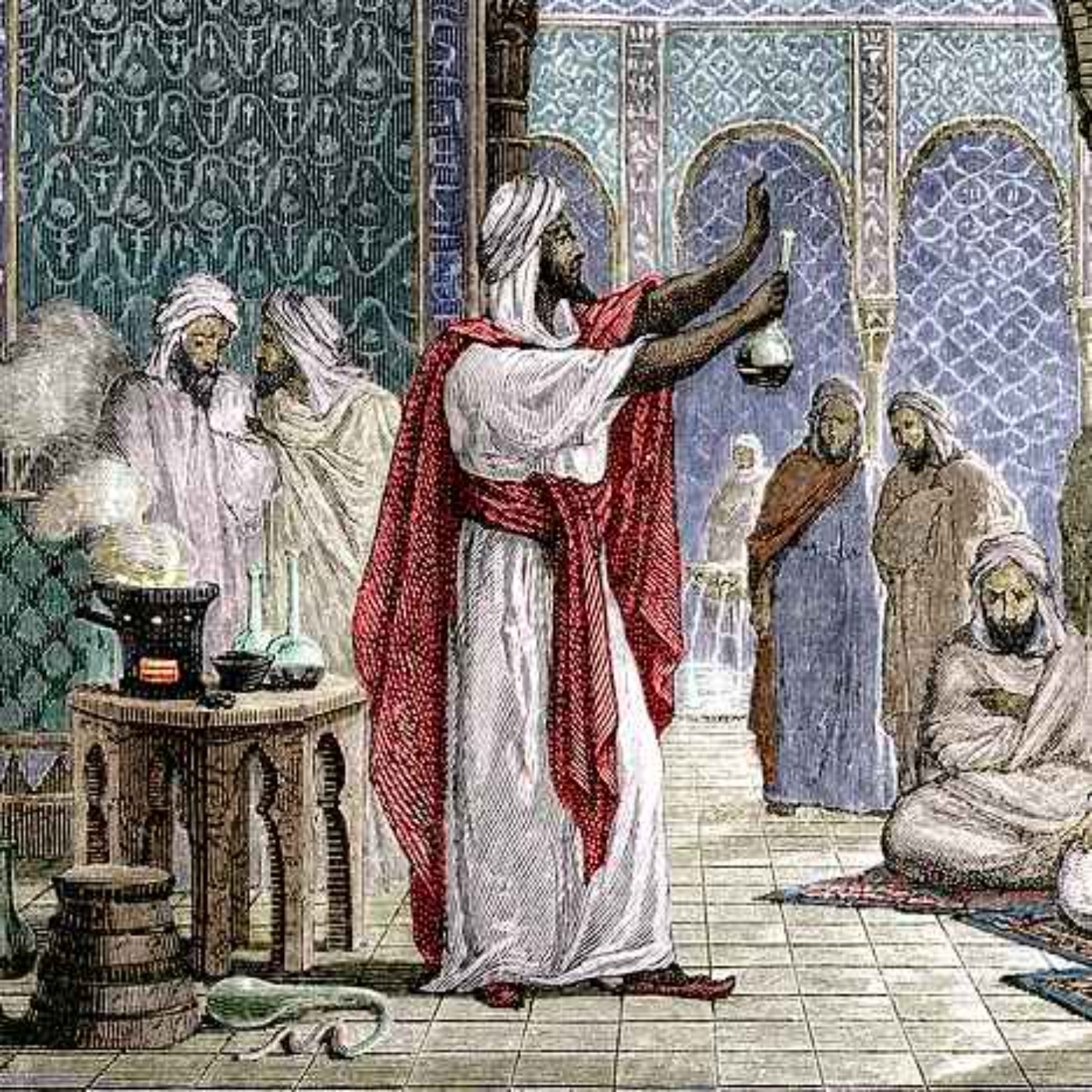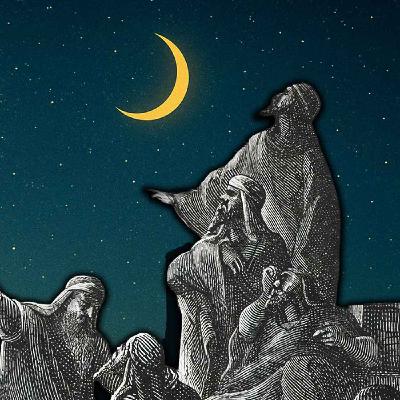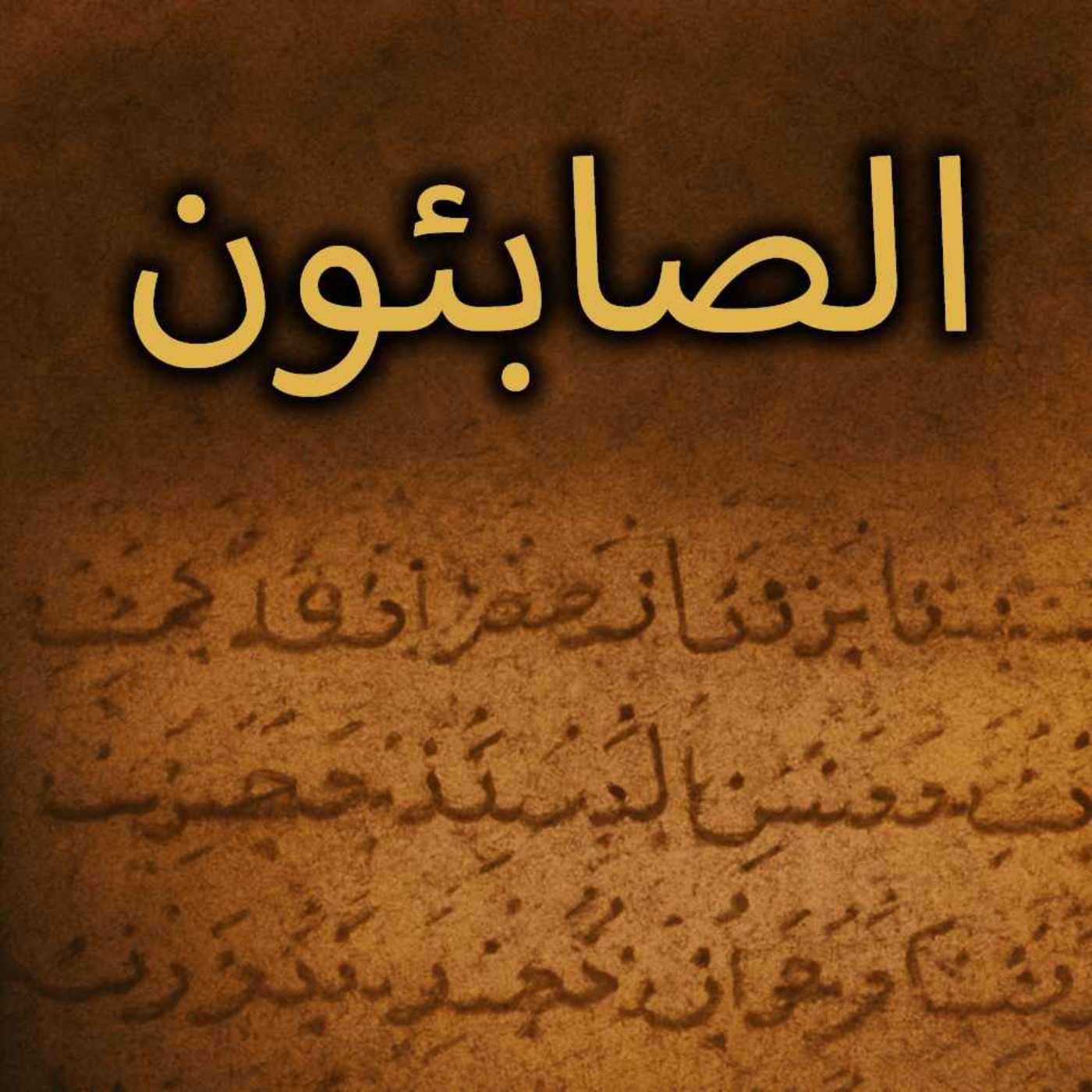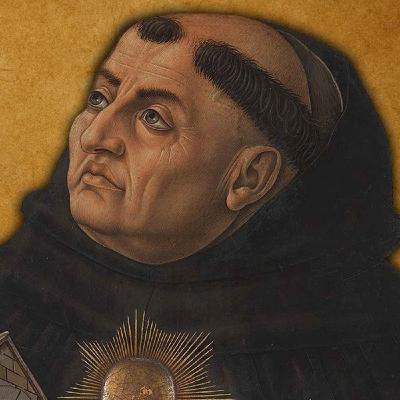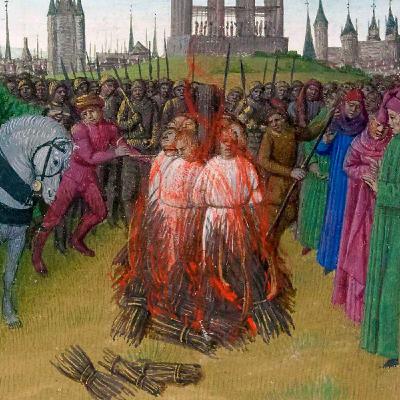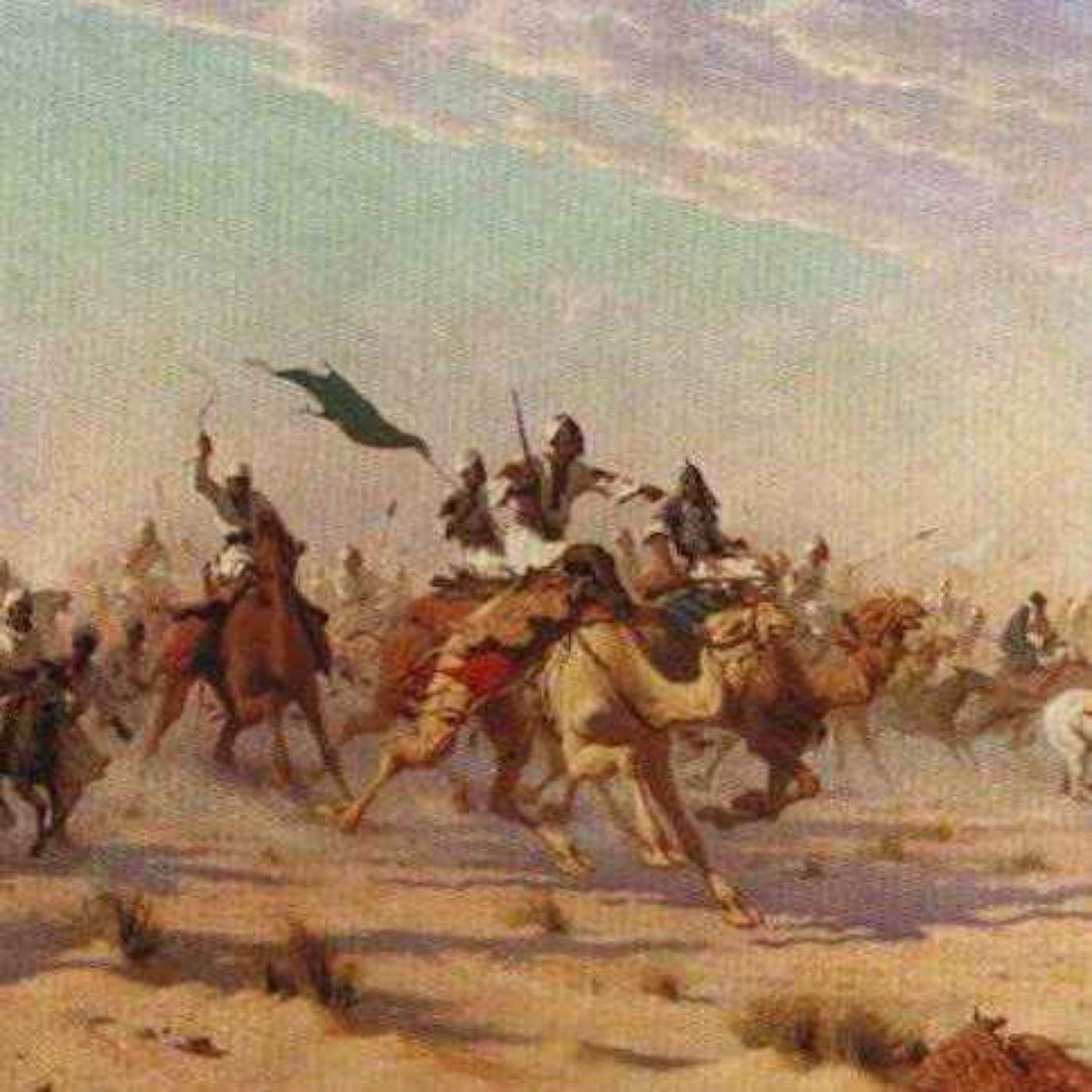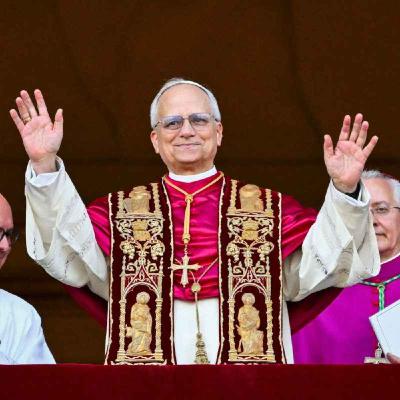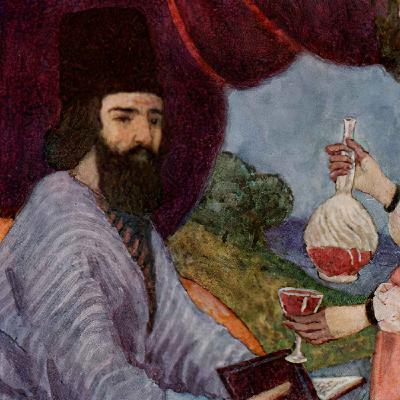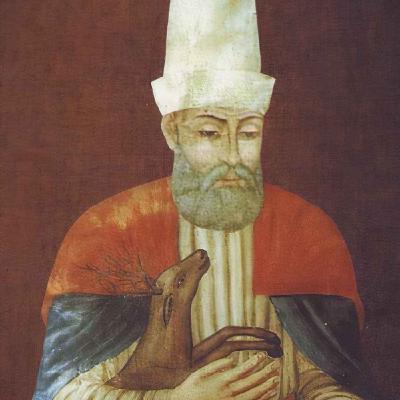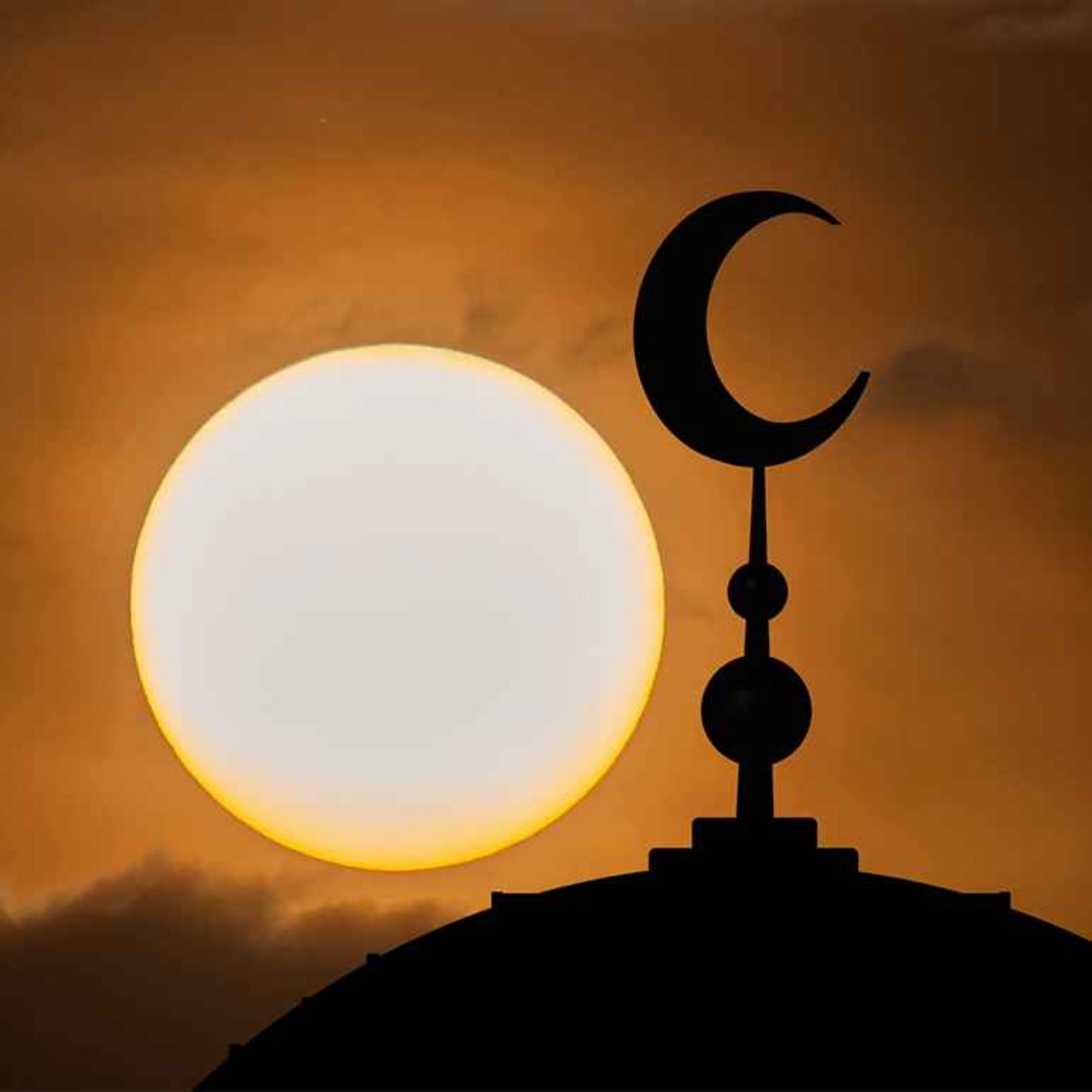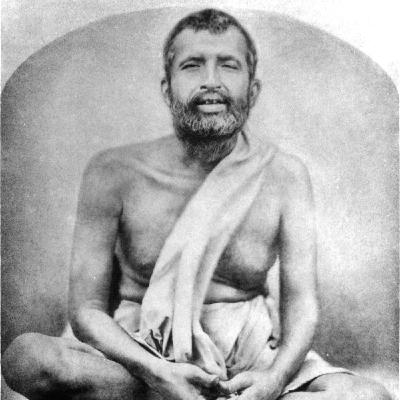Discover Let's Talk Religion
Let's Talk Religion

Let's Talk Religion
Author: Filip Holm
Subscribed: 392Played: 14,224Subscribe
Share
© Filip Holm
Description
This podcast aims to educate on the subject of religion from an academic perspective and to open up for informed discussions on the subject. You will find episodes discussing the big religions of the world and historical overviews of important figures from different religious traditions.
Hosted on Acast. See acast.com/privacy for more information.
166 Episodes
Reverse
Nicholas of Cusa was a 15th-century philosopher, theologian, and mathematician whose ideas anticipated modern science and philosophy. In this video, we explore his life, key works, and radical concept of “learned ignorance,” as well as his views on infinity, knowledge and religious diversity. Discover why this forgotten medieval thinker still matters today.Find me and my music here:https://linktr.ee/filipholmSupport Let's Talk Religion on Patreon: https://www.patreon.com/letstalkreligion Or through a one-time donation: https://paypal.me/talkreligiondonateSources/Recommended Reading:Bond. H. Lawrence (edited and translated by) (1997). "Nicholas of Cusa: Selected Spiritual Writings". Classics of Western Spirituality Series. Paulist Press.Hopkins, Jasper (translated by) (1986). "NICHOLAS OF CUSA’S DE PACEFIDEI AND CRIBRATIO ALKORANI". Second edition. THE ARTHUR J. BANNING PRESS MINNEAPOLIS.McGinn, Bernard. "The Presence of God" Series, in several volumes. Perhaps the best and most comprehensive introduction to Christian mysticism. Published by Crossroad Publishing Co.Valkenberg, Pim (2011). "Sifting the Qur’an: Two Forms of Interreligious Hermeneutics in Nicholas of Cusa". In "Interreligious Hermeneutics in Pluralistic Europe", Currents of Encounter Online, Volume: 40. Brill. Hosted on Acast. See acast.com/privacy for more information.
In this video, I explain the meaning of taqiyya in Islamic tradition & where it comes from. We look at its historical context, what scholars actually say about it historically and today.Find me and my music here:https://linktr.ee/filipholmSupport Let's Talk Religion on Patreon: https://www.patreon.com/letstalkreligion Or through a one-time donation: https://paypal.me/talkreligiondonateSources/Recommended Reading:Hallaq, Wael (2004). "The Origins and Evolution of Islamic Law". Cambridge University Press. Hallaq, Wael (2009). "Sharia: Theory, Practice, Transformations". Cambridge University Press. Stewart, Devin (2013). "Dissimulation in Sunni Islam and Morisco Taqiyya*". AL-QANTARA, XXXIV 2, 2013, pp. 439-490.https://islamqa.org/hanafi/askimam/81133/?utm Hosted on Acast. See acast.com/privacy for more information.
What is Sharia law, really? In this video, we break down the meaning of Sharia, explain where it comes from, and discuss some of the most misunderstandings you’ve probably heard online.Find me and my music here:https://linktr.ee/filipholmSupport Let's Talk Religion on Patreon: https://www.patreon.com/letstalkreligion Or through a one-time donation: https://paypal.me/talkreligiondonateSources/Recommended Reading:Hallaq, Wael (2004). "The Origins and Evolution of Islamic Law". Cambridge University Press. Hallaq, Wael (2009). "Sharia: Theory, Practice, Transformations". Cambridge University Press. Kamali, Mohammad Hashim, 'Shariah: Meaning, Definition, History, and Sources', Shariah and the Halal Industry (New York, 2021; online edn, Oxford Academic, 19 Aug. 2021). Hosted on Acast. See acast.com/privacy for more information.
The Qadiriyya is often called the most widespread Sufi order in the world — but how did one 12th-century mystic in Baghdad inspire a global movement that still thrives today?This episode explores the life and legacy of Abd al-Qadir al-Jilani, the saint revered across the Muslim world as Ghaus al-A‘zam — “the greatest helper.”From medieval Baghdad to North Africa, Turkey, South Asia, and beyond, we trace how his teachings spread across continents, shaping Islamic spirituality for nearly 900 years.Find me and my music here:https://linktr.ee/filipholmSupport Let's Talk Religion on Patreon: https://www.patreon.com/letstalkreligion Or through a one-time donation: https://paypal.me/talkreligiondonateSources/Recommended Reading:Abun-Nasr, Jamil M. (2007). "Muslim Communities of Grace: The Sufi Brotherhoods in Islamic Religious Life". C Hurst & Co Publishers Ltd.Knysh, Alexander (2012). "Islamic Mysticism: A Short History". BRILL. Malik, Hamza (2018). "The Grey Falcon: The Life and Teaching of Shaykh 'Abd Al-Qadir Al-Jilani". BRILL.Trimingham, John Spencer (1971). "Sufi Orders in Islam". Oxford University Press. Hosted on Acast. See acast.com/privacy for more information.
Discover the fascinating history of alchemy — the ancient art that aimed to turn base metals into gold. From mystical experiments to the birth of modern chemistry, this video explores how alchemists shaped science, philosophy, and the human quest for knowledge.Find me and my music here:https://linktr.ee/filipholmSupport Let's Talk Religion on Patreon: https://www.patreon.com/letstalkreligion Or through a one-time donation: https://paypal.me/talkreligiondonateSources/Recommended Reading:Abt, Theodore (ed.) (2007). "Corpus Alchemicum Arabicum: Book of the Explanation of the Symbols Kitab Hall Ar-Rumuz". Psychological Commentary by Marie-Louise Von Franz. Living Human Heritage Publications. Adamson, Peter (2021). "Al-Rāzī". Great Medieval Thinkers. OUP USA.Corriente, Federico & Ed Emery (translated by) (2004). "Twenty-seven Muwashshashaat and One Zajal by Ibn al-'Arabi of Murcia (1165-1240)". Dodge, Bayard (translated by) (1998). "The Fihrist: A 10th Century Ad Survey of Islamic Culture". Kazi Pubns Inc. Grimes, Shannon (2018). "Becoming Gold: Zosimos of Panopolis and the Alchemical Arts in Roman Egypt". Rubedo Press.Hirtenstein, Stephen (translated by) (2018). "The Alchemy of Human Happiness (Mystical Treatises of Muhyiddin Ibn 'Arabi)". Anqa Publishing.Principe, Lawrence (2013). "The Secrets of Alchemy". University of Chicago Press. Hosted on Acast. See acast.com/privacy for more information.
Long before modern horror imagined zombies or demons, ancient Arabic folklore spoke of the Ghoul (غول) — a terrifying shape-shifting creature haunting deserts, ruins, and graveyards. In this video, we uncover the true origins of the Ghoul: its roots in pre-Islamic Arabian mythology, its transformation through Islamic tradition, and its lasting influence on global horror culture.Find me and my music here:https://linktr.ee/filipholmSupport Let's Talk Religion on Patreon: https://www.patreon.com/letstalkreligion Or through a one-time donation: https://paypal.me/talkreligiondonateSources/Recommended Reading:Al-Rawi, Ahmed (2009). "The Mythical Ghoul in Arabic Culture". Article. The University of California.Al-Rawi, Ahmed (2009). "The Arabic Ghoul and its Western Transformation". Folklore 120 (December 2009): 291–306. Lebling, Robert & Tahir Shah (2014). "Legends of the Fire Spirits: Jinn and Genies from Arabia to Zanzibar. I.B. Tauris.Henninger, Joseph (2004). "Beliefs in Spirits among the Pre-Islamic Arabs". In "Magic and Divination in Early Islam". Edited by Emile Savage-Smith. Ashgate Publishing Company.Rašić, Dunja (2024). "Bedeviled: Jinn Doppelgangers in Islam and Akbarian Sufism". State University of New York Press."The Annotated Arabian Nights: Tales from 1001 Nights". Edited by Paulo Lemos Horta. Translated by Yasmine Seale. Liveright Publishing Corporation.Online version of Qazwini's "Wonders of Creation": https://shamela.ws/book/30006/310?utm_source=chatgpt.com Hosted on Acast. See acast.com/privacy for more information.
Who were the mysterious Sabians of Harran? This forgotten group of ancient star-worshippers left behind one of history’s most fascinating mysteries. We look at the contemporary sources to (try to) find out what these ancient peoples actually believed and practiced.Find me and my music here:https://linktr.ee/filipholmSupport Let's Talk Religion on Patreon: https://www.patreon.com/letstalkreligion Or through a one-time donation: https://paypal.me/talkreligiondonateAlso check out the Let's Talk Religion Podcast: https://open.spotify.com/show/0ih4sqtWv0wRIhS6HFgerb?si=95b07d83d0254bSources/Recommended Reading:Dodge, Bayard (translated by) (1970). "The Fihrist of al-Nadim: A Tenth Century Survey of Muslim Culture". Columbia University Press. Gunduz, Sinasi (1994). "The Knowledge of Life: The Origins and Early History of the Mandaeans and Their Relation to the Sabians of the Qur'an and to the Harranians". Oxford University Press.Hjärpe, Jan (1972). "Analyse critique des traditions arabes sur les Sabéens Harraniens". Doctoral thesis. University of Uppsala.Moses Maimonides - "The Guide for the Perplexed - A New Translation". Translated with commentary by Lenn E. Goodman & Philip I. Lieberman.Stanford University Press.Tardieu, Michel (1986). "Sabiens coraniques et Sabiens' de Harran'. Journal Asiatique 274, 1-44.Tardieu, Michel (1987). "Les calandriers en usage a Harran d'aprés les sources arabes et le commentaire de Simplicius a la physique d'Aristotle". In Ilsetraut Hadot, ed., "Simplicius: Sa vie, son aevre, sa survie. Acted du colloque international de Paris (28 Sept.-1 Oct. 1985)". Berlin, de Gruyter, 40-57).Van Bladel, Kevin (2009). "The Arabic Hermes: From Pagan Sage to Prophet of Science". OUP USA.Van Bladel, Kevin (2017). "From Sasanian Mandaeans to Sabians of the Marshes". Brill. Hosted on Acast. See acast.com/privacy for more information.
Who were the Sabians (Ṣābi’ūn) mentioned in the Quran? Were they a mysterious religious community, early monotheists, Mandaeans, star-worshippers, or something else entirely? In this video, we explore the fascinating question of the identity of the Sabians, drawing on Islamic sources, Quranic references, historical accounts, and scholarly debates.Music by Filip Holm (me)Find me and my music here:https://linktr.ee/filipholmSupport Let's Talk Religion on Patreon: https://www.patreon.com/letstalkreligion Or through a one-time donation: https://paypal.me/talkreligiondonateSources/Recommended Reading:Gunduz, Sinasi (1994). "The Knowledge of Life: The Origins and Early History of the Mandaeans and Their Relation to the Sabians of the Qur'an and to the Harranians". Oxford University Press.Van Bladel, Kevin (2009). "The Arabic Hermes: From Pagan Sage to Prophet of Science". OUP USA.Van Bladel, Kevin (2017). "From Sasanian Mandaeans to Sabians of the Marshes". Brill. Hosted on Acast. See acast.com/privacy for more information.
Who are the Druze? In this video, we explore the history, culture, and beliefs of the Druze people — a small but influential religious community mainly found in Lebanon, Syria and Jordan.Find me and my music here:https://linktr.ee/filipholmSupport Let's Talk Religion on Patreon: https://www.patreon.com/letstalkreligion Or through a one-time donation: https://paypal.me/talkreligiondonateSources/Recommended Reading:Betts, Robert Brenton (2009). "The Druze". Yale University Press.Daftary, Farhad (2007). "The Isma'ilis: Their history and doctrines". Cambridge University Press.Firro, Kais M. (2011). "The Druze Faith: Origin, Development and Interpretation". Arabica 58 (2011) 76-99. Brill.Hirschberg, H.Z. (1981). "The Druzes". In "Religion in the Middle East: Three Religions in Concord and conflict (ed. Arberry, A.J. & Beckingham, C.F.), vol 2. Cambridge University Press.Hitti, Philip K. (2007). "The Origins of the Druze People and Religion: With Extracts from their Sacred Writings." Saqi Books. Hodgson, Marshall G.S. (1962). "Al-Darazi and Hamza in the Origins of the Druze Religion". Journal of the American Oriental Society, Vol 82, No. 1.Walker, Paul E. (2010). "Caliph of Cairo: Al-Hakim bi-Amr Allah, 996-1021". The American University in Cairo Press. Hosted on Acast. See acast.com/privacy for more information.
The Jesuits, officially known as the Society of Jesus, are one of the most influential religious orders in the Catholic Church. Founded in 1540 by St. Ignatius of Loyola, they have played a central role in education, missionary work, science, and global history. This video explores who the Jesuits are, their origins, their impact on the Counter-Reformation, and their lasting influence on culture, politics, and spirituality.Find me and my music here:https://linktr.ee/filipholmSupport Let's Talk Religion on Patreon: https://www.patreon.com/letstalkreligion Or through a one-time donation: https://paypal.me/talkreligiondonateSources/Recomended Reading:Freidrich, Markus (2023). "The Jesuits: A History". Princeton University Press.Rowman & Littlefield Publishers.O'Malley, John W. (2014). "The Jesuits: A History from Ignatius to the Present". Hosted on Acast. See acast.com/privacy for more information.
Discover the life, works, and enduring influence of Thomas Aquinas (1225–1274), the Dominican friar whose synthesis of faith and reason transformed philosophy and theology.Find me and my music here:https://linktr.ee/filipholmSupport Let's Talk Religion on Patreon: https://www.patreon.com/letstalkreligion Or through a one-time donation: https://paypal.me/talkreligiondonateSources/Recomended Reading:Aquinas, Thomas (1998). "Selected Writings". Penguin Classics.Davies, Brian & Elenore Stump (ed.) (2012). "The Oxford Handbook of Aquinas". OUP USA.Kretzmann, Norman & Eleonore Stump (ed.) (2010). "The Cambridge Companion to Aquinas". Cambridge University Press.The Summa Theologica Translation by Ave Maria Press (1981). Hosted on Acast. See acast.com/privacy for more information.
Dive into the forgotten history of the Amalricians, a radical medieval sect branded heretical by the Catholic Church. Followers of philosopher Amalric of Bena, the Amalricians believed in a mystical union with God and a controversial idea: that God was not separate from creation. Discover how their daring pantheistic beliefs challenged Church orthodoxy — and led to their dramatic suppression in the early 13th century.Find me and my music here:https://linktr.ee/filipholmSupport Let's Talk Religion on Patreon: https://www.patreon.com/letstalkreligion Or through a one-time donation: https://paypal.me/talkreligiondonateSources/Recomended Reading:Angus Braid's Website "The Amalrician Heresy" is an excellent source on the Amalricians in particular: https://theamalricianheresy.wordpress.comCohn, Norman (1970). "The Pursuit of the Millennium: Revolutionary Millenarians and Mystical Anarchists of the Middle Ages". Oxford University Press.McGinn, Bernard. "The Presence of God" Series, in several volumes. Perhaps the best and most comprehensive introduction to Christian mysticism. Published by Crossroad Publishing Co. Hosted on Acast. See acast.com/privacy for more information.
In this episode, we explore the powerful philosophy of Pantheism—the belief that God is identical with the universe and everything in it. From ancient roots to modern interpretations, we dive deep into how Pantheism connects spirituality, science, and nature in a unified vision of reality.Find me and my music here:https://linktr.ee/filipholmSupport Let's Talk Religion on Patreon: https://www.patreon.com/letstalkreligion Or through a one-time donation: https://paypal.me/talkreligiondonateAlso check out the Let's Talk Religion Podcast: https://open.spotify.com/show/0ih4sqtWv0wRIhS6HFgerb?si=95b07d83d0254bSources/Recomended Reading:Chittick, William (1989). "The Sufi Path of Knowledge: Ibn 'Arabi's Metaphysics of Imagination".Chittick, William (1998). "The Self-Disclosure of God: Principles of Ibn al-'Arabi's Cosmology". State University of New York Press.Chittick, William (2005). "Ibn Arabi: Heir to the Prophets". OneWorld Publications.Garrett, Don (1996). "The Cambridge Companion to Spinoza". Cambridge University Press.Gatti, Hilary (ed.) (2002). "Giordano Bruno: Philosopher of the Renaissance". Routledge.Idel, Moshe (1990). "Kabbalah: New Perspectives". Yale University Press.Inwood, Brad (ed.) (2003). "The Cambridge Companion to the Stoics". Cambridge University Press.Levine, Michael P.P. (2014). "Pantheism: A Non-Theistic Concept of Deity". Routledge.McGinn, Bernard. "The Presence of God" Series, in several volumes. Perhaps the best and most comprehensive introduction to Christian mysticism. Published by Crossroad Publishing Co.Scholem, Gershom (1995). "Major Trends in Jewish Mysticism". Schocken Books; Revised edition.Rubenstein, Mary-Jane (2018). "Pantheologies: Gods, Worlds, Monsters". Columbia University Press.Wolfson, Harry Austryn (2014). "The Philosophy of Spinoza: Unfolding the Latent Processes of His Reasoning". Harvard University Press."The Ethics" by Spinoza"Cause, Principle & Unity" by Giordano Bruno Hosted on Acast. See acast.com/privacy for more information.
In this episode, we given an academic, historical overview of the concept of Jihad in Islam, dispelling some misconceptions and nuancing an otherwise thorny topic.Sources/Recomended Reading:Al-Dawoody, Ahmed Mohsen (2009). "War in Islamic Law: Justifications and Regulations". PhD Thesis. University of Birmingham.Bashir, Khaled Ramadan (2018). "Islamic International Law: Historical Foundations and Al-Shaybani's Siyar". Edward Elgar Publishing Limited.Bonner, Michael (2008). “Jihad in Islamic History: Doctrines and Practice”. Princeton University Press.Brown, Jonathan A.C. (2019). "Slavery and Islam". Oneworld.Ghazi, Mahmood Ahmad (translated by) (1998). "Kitab al-Siyar al-Saghir" by Muhammad al-Shaybani. Islamic Research Institute.Hallaq, Wael (2004). "The Origins and Evolution of Islamic Law". Cambridge University Press. Hallaq, Wael (2009). "Sharia: Theory, Practice, Transformations". Cambridge University Press. Judd, Steven C. (2009). "al-Awza'i and Sufyan al-Thawri: The Umayyad Madhhab". In Bearman, Peri; Rudolph Peters & Frank E. Vogel (ed.), "The Islamic School of Law: Evolution, Devolution & Progress". Brill.Judd, Steven C. (2019). "'Abd al-Rahman b. Amr al-Awza'i". In the "Makers of the Muslim World" Series. Oneworld.Khan Nyazee, Imran Ahsan (translated by) (2000). "The Distinguished Jurist's Primer: Bidayat Al-Mujtahid Wa Nihayat Al-Muqtasid." Vol. 1-2. Garnet Publishing.Kimball, Michelle R. (2018). "Shaykh Ahmadou Bamba: A Peacemaker for Our Time". The Other Press Sdn. Bhd.Kiser, John W (2015). "Commander of the Faithful: The Life and Times of Emir Abd El-Kader". Monkfish Book Publishing Company.Urban, Elizabeth (2020). "Conquered Populations in Early Islam: Non-Arabs, Slaves and the Sons of Slave Mothers". Edinburgh University Press.Zawati, Hilmi M. (2015). "Theory of War in Islamic and Public International Law". In "Is Jihad Just War? War, Peace and Human Rights under Islamic and Public International Law", (Lewiston, NY: Edwin Mellen Press, 2001) 9-47, reprinted in Niaz A. Shah, ed., Islam and the Law of Armed Conflict (Cheltenham, UK: Edward Elgar,2015) 249-287.Zemmali, Ameur (1990). "Imam al-Awza'i and his humanitarian ideas". In International Review of the Red Cross (1961 - 1997) , Volume 30 , Issue 275 , April 1990 , pp. 115 - 123. International Committee of the Red Cross. Hosted on Acast. See acast.com/privacy for more information.
Find me and my music here:https://linktr.ee/filipholmSupport Let's Talk Religion on Patreon: https://www.patreon.com/letstalkreligion Or through a one-time donation: https://paypal.me/talkreligiondonateSources/Recomended Reading:Gutierrez, David (1984). "The Augustinians in The Middle Ages 1256-1356". In "History of The Order of Saint Augustine. Volume 1 - Part 1.". Augustinian Historical Institute. Villanova University.McGinn, Bernard. "The Presence of God" Series, in several volumes. Hosted on Acast. See acast.com/privacy for more information.
Find me and my music here:https://linktr.ee/filipholmSupport Let's Talk Religion on Patreon: https://www.patreon.com/letstalkreligion Or through a one-time donation: https://paypal.me/talkreligiondonateSources/Recomended Reading:Clarke, Abdussamad (translated by) (2021). "The Kitab al-Athar of Abu Hanifah". Turath Publishing.El Shamsy, Ahmed (2013). "The Canonization of Islamic Law: A Social and Intellectual History". Cambridge University Press.Gohlman, William E. (translated by) (1974). "The Life of Ibn Sina: A Critical Edition and Annotated Translation". State University of New York Press.Haider, Najam (2012). "The Origins of the Shi'a: Identity, Ritual and Sacred Space in Eighth Century Kufa". Cambridge University Press.Haider, Najam (2013). "Contesting Intoxication: Early Juristic Debates over the Lawfulness of Alcoholic Beverages". In Islamic Law and Society 20 (2013) 48-89. Brill. Hallaq, Wael (2004). "The Origins and Evolution of Islamic Law". Cambridge University Press. Hallaq, Wael (2009). "Sharia: Theory, Practice, Transformations". Cambridge University Press. Wyman-Landgraf, Umar F. Abd-Allah (2013). "Malik and Medina: Islamic Reasoning in the Formative Period". Brill.al-Tahawi's "al-Mukhtasar". Arabic version. Hosted on Acast. See acast.com/privacy for more information.
Find me and my music here:https://linktr.ee/filipholmSupport Let's Talk Religion on Patreon: https://www.patreon.com/letstalkreligion Or through a one-time donation: https://paypal.me/talkreligiondonateSources/Recomended Reading:Badakhchani, S.J. (translated by) (1999). “Contemplation and Action: The Spiritual Autobiography of a Muslim Scholar”. I.B. Tauris.Badakhchani, S.J. (translated by) (2004). “The Paradise of Submission: A Medieval Treatise on Ismaili Thought”. Ismaili Texts and Translations. I.B. Tauris.Chittick, William (1981). “Mysticism versus Philosophy in Earlier Islamic History: The Al-Ṭūsī, Al-Qūnawī Correspondence”. In Religious StudiesVol. 17, No. 1 (Mar., 1981). Cambridge University Press.Daftary, Farhad (2007). "The Isma'ilis: Their history and doctrines". Cambridge University Press.Meisami, Sayeh (2019). “Nasir al-Din Tusi: A Philosopher for All Seasons”. The Islamic Texts Society.Qara’i, Ali Quli (translated by) (?) “Awsaf al-Ashraf: Attributes of the Noble”. In al-Tawhid Islamic Journal, Vol.11, No.3, No.4. Hosted on Acast. See acast.com/privacy for more information.
Find me and my music here:https://linktr.ee/filipholmSupport Let's Talk Religion on Patreon: https://www.patreon.com/letstalkreligion Or through a one-time donation: https://paypal.me/talkreligiondonateAlso check out the Let's Talk Religion Podcast: https://open.spotify.com/show/0ih4sqtWv0wRIhS6HFgerb?si=95b07d83d0254bSources/Recomended Reading:Elsie, Robert (2019). "The Albanian Bektashi: History and Culture of a Dervish Order in the Balkans". I.B. Tauris.Kingsley Birge, John (1937). "The Bektashi Order of Dervishes". Hartford Seminary Press.Smith, Grace Martin (1993). "The Poetry of Yunus Emre: A Turkish Sufi Poet". University of California Press.Soileau, Mark (2018). "Humanist Mystics: Nationalism and the Commemoration of Saints in Turkey". The University of Utah Press. Hosted on Acast. See acast.com/privacy for more information.
Find me and my music here:https://linktr.ee/filipholmSupport Let's Talk Religion on Patreon: https://www.patreon.com/letstalkreligion Or through a one-time donation: https://paypal.me/talkreligiondonateSources/Recomended Reading:Ahmed, Shahab (2017). "What is Islam?: The Importance of Being Islamic". Princeton University Press.Bulliet, Richard (2004) "The Case for Islamo-Christian Civilization". Columbia University Press.Melvin-Koushki, Matthew (2017). "Powers of One: The Mathematicalization of the Occult Sciences in the High Persianate Tradition". Intellectual History of the Islamicate World 5, no. 1: 127-99.Ragep, F. Jamil (2004). "Copernicus and His Islamic Predecessors: An Aspect of Islamic Influence on Science". Osiris 16 n.s.: 49-71.SHWEP episodes:https://shwep.net/podcast/matthew-melvin-koushki-on-islam-the-west-and-western-esotericism/https://shwep.net/podcast/matthew-melvin-koushki-on-the-west/ Hosted on Acast. See acast.com/privacy for more information.
We explore one of the most influential and significant Hindu figures in modern times.Written by Anmol KohliCo-written by myself (Filip Holm)Find me and my music here:https://linktr.ee/filipholmSupport Let's Talk Religion on Patreon: https://www.patreon.com/letstalkreligion Or through a one-time donation: https://paypal.me/talkreligiondonateSources/Recomended Reading:Swami Saradananda, Sri Ramakrishna and His Divine Play (translated by Swami Chetanananda) - the "Leelaprasanga". Vedanta Society of St. Louis.Mahendranath Gupta, The Gospel of Sri Ramakrishna (translated by Swami Nikhilananda) - the "Kathamrita". Ramakrishna-Vivekananda Center,N.Y.Ayon Maharaj, Infinite Paths to Infinite Reality: Sri Ramakrishna and Cross-Cultural Philosophy of Religion. OUP USA.The Life of Swami Vivekananda, by his Eastern and Western Disciples. Vedanta Pr. Hosted on Acast. See acast.com/privacy for more information.


